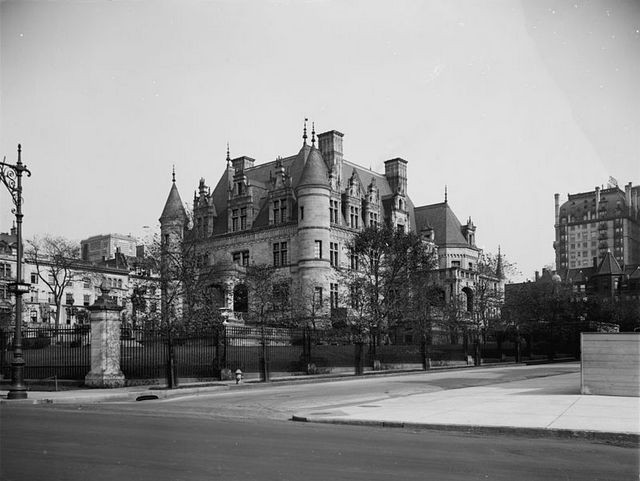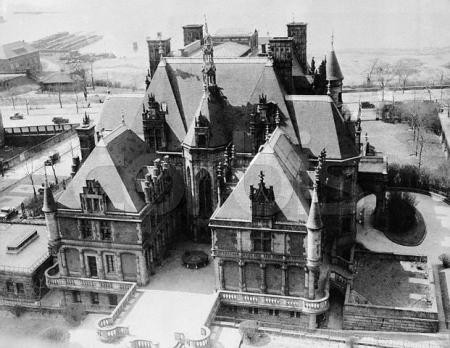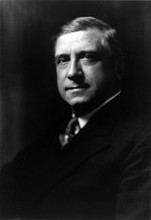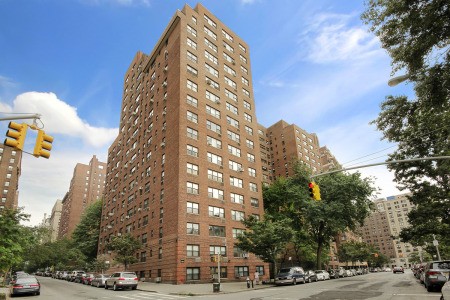Site of Charles Schwab Mansion (now Schwab House apartments)
Introduction
Text-to-speech Audio
Steel magnate Charles Schwab once had perhaps the grandest mansion in Manhattan. In the 1880s, Riverside Drive was sparsely settled, but there was a growing belief that the city's barons would eventually give up Fifth Avenue and move to a pastoral spot overlooking the Hudson River. The mass migration of the city's wealthiest residents didn't happen, but there were a few. Schwab, who began his career with fellow tycoon Andrew Carnegie, bought an entire block along Riverside and built an expansive mansion inspired by French chateaus. The mansion survived only a few years after Schwab's death, and was eventually demolished and replaced by the 19-story Schwab House apartment complex.
Images
The Schwab mansion (Riverside) as it appeared in the late 1800s

Another view of the Schwab mansion

Charles Schwab

Schwab House

Backstory and Context
Text-to-speech Audio
In the late 1800s and early 1900s, wealthy New Yorkers were building palatial homes filled with every amenity. Most of those homes were built along Fifth Avenue, but by the turn of the twentieth century, the West Side's Riverside Drive was also becoming a desirable address. It was far less populated than other parts of the city and offered spectacular views of the Hudson River. Developers believed that the city's business and banking magnates would soon buy large plots along Riverside, and build free-standing mansions, abandoning the shoulder-to-shoulder congestion of Fifth Avenue.
But the expected migration to Riverside largely didn't materialize. Only a few palatial homes were built along the new thoroughfare, and the grandest of these was arguably the home of Charles Schwab. Schwab had served as the president of Andrew Carnegie's US Steel Company and led the creation of the US Steel Corporation. He later founded his own enterprise, Bethlehem Steel Company.
In 1901, Schwab bought the entire block from Riverside to West End between 73rd and 74th Streets. It was the first time in Manhattan that someone purchased an entire block for occupancy. He hired French architect Maurice Hebert to design an expansive home inspired by French chateaus, and the home--all 50,000 square feet of it--was built from 1902 to 1906. The enormous home had 75 rooms, including a gym, a bowling alley, a pool, and three elevators. Andrew Carnegie, whose own mansion would eventually house the Cooper-Hewitt Museum, remarked that the home "makes mine look like a shack." To keep the home running, Schwab employed a staff of 20 servants.
Schwab, as it turned out, was one of only a small number of wealthy New Yorkers who made the move to Riverside. The prevailing view seemed to be that it faced "the wrong side" of Central Park, and Fifth Avenue remained the preferred address of well-heeled Manhattanites.
Schwab, who was known as a risk-taker, lost most of his fortune during the Great Depression. Years of lavish spending did nothing to help his finances. In 1936, the New York Times reported that Schwab had approached the city about buying his home, which he dubbed Riverside, to use for the mayor's residence. Fiorello LaGuardia flatly refused the offer, a move which effectively sealed the fate of Riverside.
In 1939,Schwab's wife died, and within a few weeks, he moved into a hotel. Within a few months, Schwab himself died. For a few years after his death, there were efforts to sell his former home, but few people had the kind of money it would require to either purchase or maintain the home. In 1948, the home--which was less than 50 years old--was demolished.
In its place, a 19-story red brick apartment complex, appropriately called Schwab House, was constructed. The buildings occupy roughly 60 per cent of the block that once belonged to Schwab. The buildings were completed in 1950 and converted from rental to co-op in 1984. Though the building possesses nothing of the style or grandeur of the site's original occupant, the apartments have nonetheless become one of the most desirable addresses on the Upper West Side, largely for the same reason that Charles Schwab built his mansion there--the unobstructed views of the river.
But the expected migration to Riverside largely didn't materialize. Only a few palatial homes were built along the new thoroughfare, and the grandest of these was arguably the home of Charles Schwab. Schwab had served as the president of Andrew Carnegie's US Steel Company and led the creation of the US Steel Corporation. He later founded his own enterprise, Bethlehem Steel Company.
In 1901, Schwab bought the entire block from Riverside to West End between 73rd and 74th Streets. It was the first time in Manhattan that someone purchased an entire block for occupancy. He hired French architect Maurice Hebert to design an expansive home inspired by French chateaus, and the home--all 50,000 square feet of it--was built from 1902 to 1906. The enormous home had 75 rooms, including a gym, a bowling alley, a pool, and three elevators. Andrew Carnegie, whose own mansion would eventually house the Cooper-Hewitt Museum, remarked that the home "makes mine look like a shack." To keep the home running, Schwab employed a staff of 20 servants.
Schwab, as it turned out, was one of only a small number of wealthy New Yorkers who made the move to Riverside. The prevailing view seemed to be that it faced "the wrong side" of Central Park, and Fifth Avenue remained the preferred address of well-heeled Manhattanites.
Schwab, who was known as a risk-taker, lost most of his fortune during the Great Depression. Years of lavish spending did nothing to help his finances. In 1936, the New York Times reported that Schwab had approached the city about buying his home, which he dubbed Riverside, to use for the mayor's residence. Fiorello LaGuardia flatly refused the offer, a move which effectively sealed the fate of Riverside.
In 1939,Schwab's wife died, and within a few weeks, he moved into a hotel. Within a few months, Schwab himself died. For a few years after his death, there were efforts to sell his former home, but few people had the kind of money it would require to either purchase or maintain the home. In 1948, the home--which was less than 50 years old--was demolished.
In its place, a 19-story red brick apartment complex, appropriately called Schwab House, was constructed. The buildings occupy roughly 60 per cent of the block that once belonged to Schwab. The buildings were completed in 1950 and converted from rental to co-op in 1984. Though the building possesses nothing of the style or grandeur of the site's original occupant, the apartments have nonetheless become one of the most desirable addresses on the Upper West Side, largely for the same reason that Charles Schwab built his mansion there--the unobstructed views of the river.
Sources
Young, Michelle. 6 Lost Mansions of the Upper West Side and Upper Manhattan. Untapped Cities. October 02, 2014. Accessed July 01, 2019. https://untappedcities.com/2014/10/02/6-lost-mansions-of-the-upper-west-side-and-upper-manhattan/.
Gray, Christopher. The Late Great Charles Schwab Mansion. New York Times. July 08, 2010. Accessed July 01, 2019. https://www.nytimes.com/2010/07/11/realestate/11streets.html.
The Most Spectacular Mansion on Riverside Drive. Ephemeral New York. . Accessed July 01, 2019. https://ephemeralnewyork.wordpress.com/2015/12/07/the-most-spectacular-mansion-on-riverside-drive/.
Gray, Christopher. The Late Great Charles Schwab Mansion. New York Times. July 08, 2010. Accessed July 01, 2019. https://www.nytimes.com/2010/07/11/realestate/11streets.html.
The Most Spectacular Mansion on Riverside Drive. Ephemeral New York. . Accessed July 01, 2019. https://ephemeralnewyork.wordpress.com/2015/12/07/the-most-spectacular-mansion-on-riverside-drive/.
